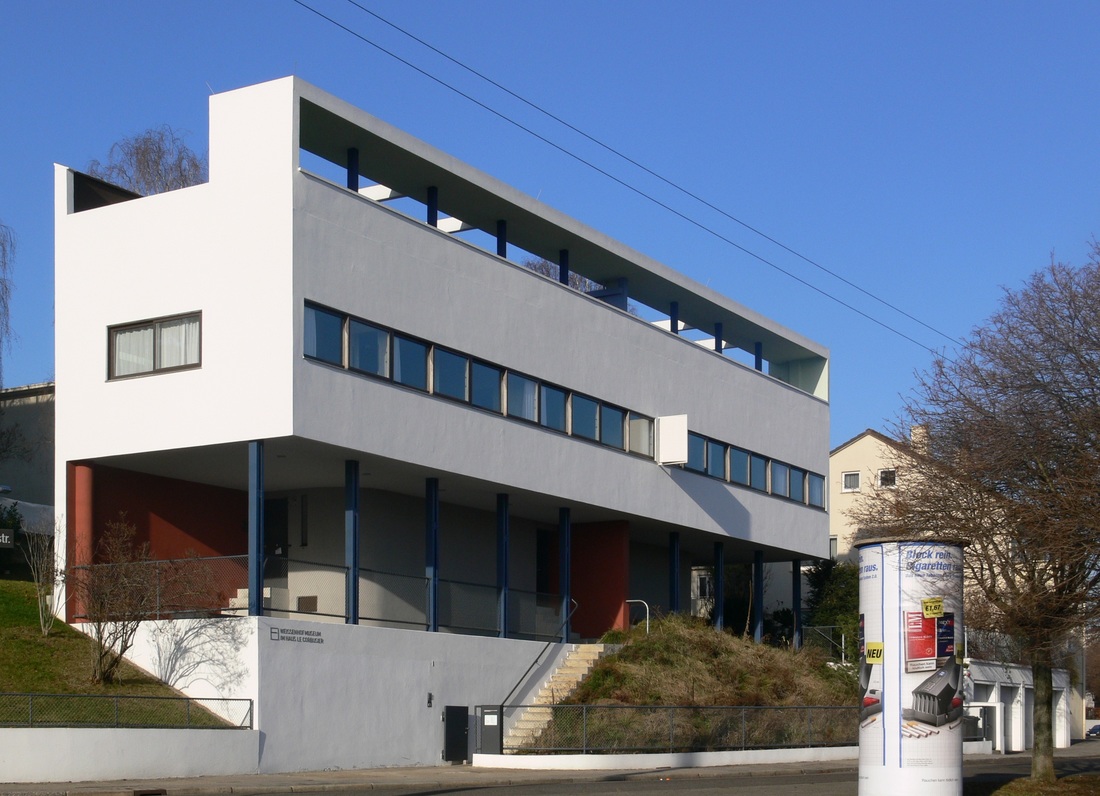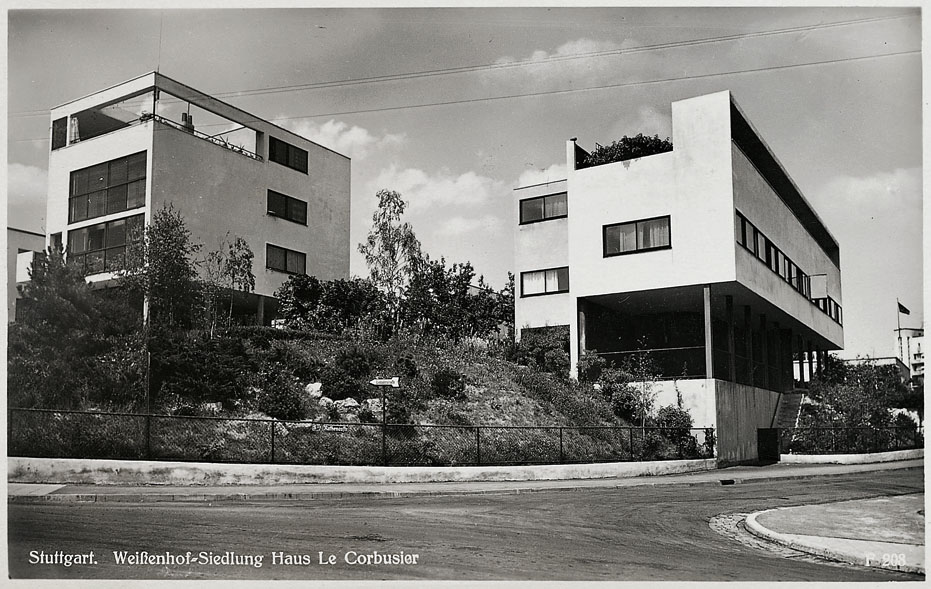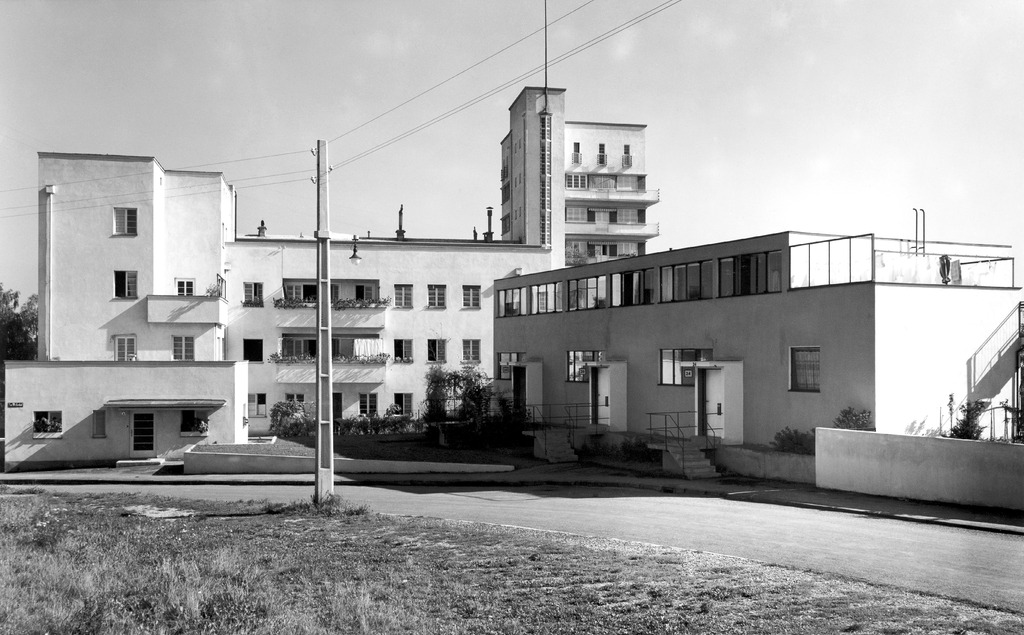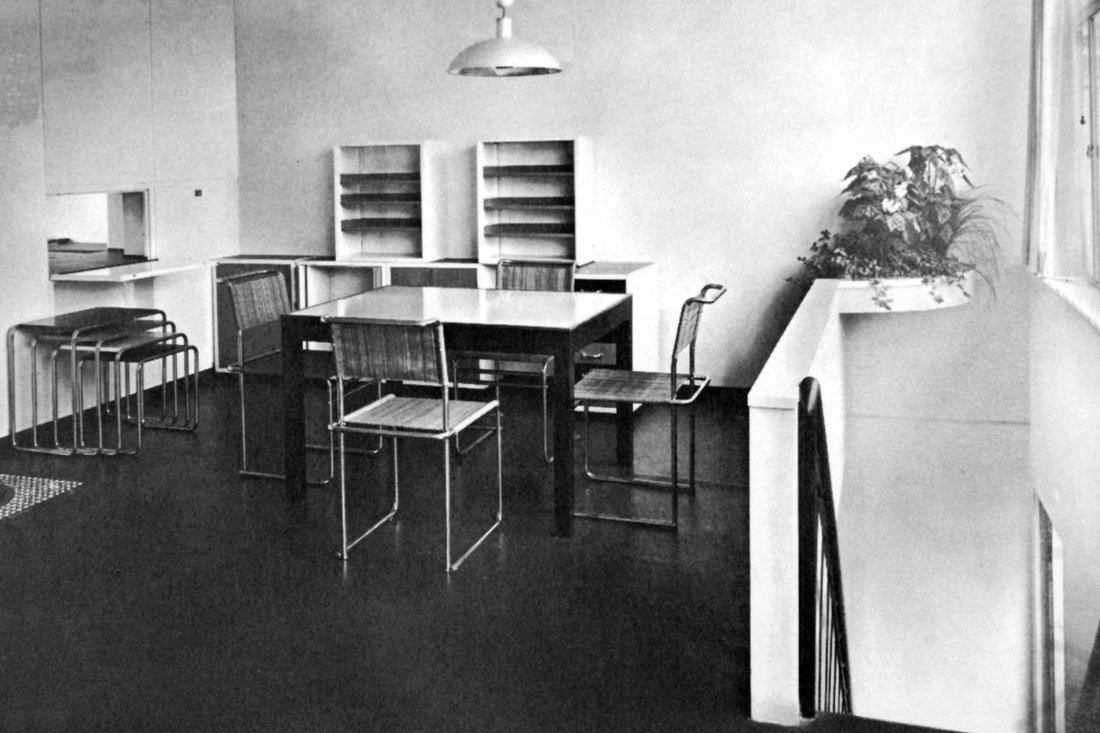The residential unit in Stuttgart designed by Le Corbusier (above and below), which have recently been added to UNESCO’s World Heritage List was initially built for an architecture exhibition in Stuttgart in 1927. The seminal event, Weissenhofsiedlung, which came to highlight new developments in Modernist housing, was curated by Ludwig Mies van der Rohe, and organized by the Deutsche Werkbund. It was built as an experimental development of low-cost workers’ housing in the Wissenhof section of Stuttgart, and was sponsored by the Stuttgart city authorities as a model estate of dwellings. Mies invited fifteen of the best-known progressive architects to take part in this project: Mart Stam and J.J.P. Oud from the Netherlands; Le Corbusier and Pierre Jeanneret from Paris; and Josef Frank from Vienna. Also participated such leading architects as Peter Behrens, Hanes Poelzig, Hennes Meyer, and Van Doesburg, all of whom created an ensemble of thirty-three buildings within five months. The structures all followed common modernist vocabulary architecture, and despite their individuality, all were conceived as a part of the Neue Sachlichkeit manner. The project was so successful, in fact, that it was hailed as an example of the ideal urban design. It was finally closed down by the Nazis, whose architects perceived it as the symbol of the un-German nature of the new architecture, and promoted it in the infamous postcard as a village in the Middle East (below). Here are some images that glorified the new architecture when first completed in 1927.







